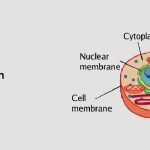Have you ever taken the time to wonder what does fuels do with our planet and make life possible? From billions of miles away, the sun produces energy in various forms, from photosynthesis that powers plant to solar radiation, which warms our atmosphere. But have you ever stopped to consider exactly what does the sun produce? In this blog post, we’ll take a closer look at some of the different types of energy and particles created by the sun and their implications for life on Earth.
What Is The Sun?
The sun is one of the most important objects in our Solar System. Not only does it provide us with warmth and light, but it also provides us with energy in the form of heat and electricity. Solar energy can be harnessed to create all sorts of things, from electricity to fuel for cars and planes.
The sun is estimated to be around 4.6 billion years old, meaning its composition mainly comprises hydrogen and helium gas. Its core – known as its nuclear furnace – produces large amounts of energy through nuclear fusion. This process occurs when two smaller atoms are combined to form a larger atom (in this case, a helium atom). As you might imagine, this process creates a lot of heat and light!
One way that solar energy can be used is to generate power for devices like phones and laptops. With solar panels installed on your roof or office building, you can generate enough power to keep your gadgets going throughout the day. Solar power can also heat water or create steam – handy tasks when you’re stuck in a cold room or office!
What Does The Sun Produce?
The sun produces energy daily from radiant light, heat, and gamma rays. This energy is essential for all living things on our planet because it allows them to generate food and fuel the earth’s life cycle. In fact, without this energy, our planet would be a lot darker and colder. Additionally, the sun also created solar wind – a stream of charged particles that can reach far beyond our planet’s orbit.
Radiant light is what we see when we look at the sun or any other object. It comprises intense gamma rays, X-rays, and ultraviolet radiation. All living things depend on this type of energy to survive because photosynthesis converts these forms of energy into glucose (which plants use to create their food) and oxygen (which animals use to breathe).
All of these different types of energy are necessary for Earth’s life cycle because they allow plants to generate their food while also providing us with oxygen. Without photosynthesis – which uses radiant light as one step in its process – life as we know it wouldn’t be possible on Earth! The solar wind is also vital for our planet because it helps keep outer space clean by removing harmful particles from our galaxy.
Energy & Heat From The Light of Sun
Every day, the sun provides us with energy and heat. This light and heat come from the sun’s rays, which are composed of photons. Photons are tiny particles that carry the color and energy of light. They travel to Earth in 8 minutes, providing us with the rays of sunshine we feel on our skin. In addition, sunlight is essential for photosynthesis – the process by which plants use light to convert water and carbon dioxide into food – and fuel other life on Earth.
Without sunlight, we would not be able to live on Earth because photosynthesis must occur. Additionally, plants could not convert food into energy or store energy for later use without sunlight. Sunlight also helps create winds, ocean currents, and weather patterns by causing molecules in the atmosphere to vibrate. To conclude, sunlight helps solar power panels generate electricity that we can use to power homes and businesses.
Why Is Understanding What The Sun Produces Important?
If you’re like most people, you probably take the sun for granted. After all, we live on a planet that’s orbited by a star that gives us life – without the sun, we wouldn’t be here. But many people don’t realize that solar energy is a sustainable and renewable energy source.
Sunlight is the primary energy source for living things, and understanding what the sun produces has implications for fields like engineering, space exploration, and environmental science. In this section, we’ll look at how understanding what the sun produces can benefit your life.
One of the most direct benefits of solar energy is temperature regulation. The sun provides heat throughout the year even when it’s not visible in the sky, which helps keep Earth’s temperature stable by regulating how much sunlight enters our planet’s atmosphere. Additionally, sunlight provides natural light during nighttime hours, which helps to improve productivity and human well-being.
Sunlight also plays an important role in plant growth and development. Photosynthesis – the process by which plants transform light into food – occurs when sunlight reaches wavelengths that plants can absorb best. By understanding how sunlight interacts with Earth’s atmosphere and climate, scientists are able to predict future climate trends more accurately. And lastly, knowing what the sun produces helps us plan for potential solar storms that significantly impact communication systems, power grids, and satellites orbiting Earth!
Verdict
We have learned that the Sun is a vital source of light, heat, and energy for our planet. We discovered what the Sun produces: radiant light, heat, gamma rays, and solar wind. Additionally, we discussed why it is important to understand what the Sun produces and how it affects our lives.
Knowing what the Sun produces can help us better prepare for potential solar storms, from temperature regulation to plant growth to predicting climate trends. Therefore, understanding what the Sun produces is important for science and beneficial for humanity. Take action today by learning more about solar energy and how you can use this sustainable resource!
![What Does The Sun Produce [Updated Guide]](https://higheducations.com/wp-content/uploads/2023/03/What-Does-The-Sun-Produce-Updated-Guide-1024x433.jpg)

